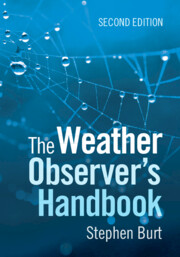Refine search
Actions for selected content:
132 results
Impact of misalignments with rotatable dihedral calibration target in mm-wave polarimetric MIMO automotive radar
-
- Journal:
- International Journal of Microwave and Wireless Technologies , First View
- Published online by Cambridge University Press:
- 30 October 2025, pp. 1-12
-
- Article
-
- You have access
- Open access
- HTML
- Export citation
Chapter 1 - Introduction
- from Part I - Basics
-
- Book:
- How to Read an EEG
- Published online:
- 27 September 2025
- Print publication:
- 24 July 2025, pp 1-14
-
- Chapter
- Export citation
How precise can the calibration of a single radiocarbon measurement be?
-
- Journal:
- Radiocarbon , First View
- Published online by Cambridge University Press:
- 13 June 2025, pp. 1-8
-
- Article
-
- You have access
- Open access
- HTML
- Export citation
Bayesian modeling of a medieval plague and famine mass graves from Sedlec-Kutná Hora, Czech Republic
-
- Journal:
- Radiocarbon / Volume 67 / Issue 4 / August 2025
- Published online by Cambridge University Press:
- 13 June 2025, pp. 819-830
- Print publication:
- August 2025
-
- Article
-
- You have access
- Open access
- HTML
- Export citation
Gaussian processes enabled model calibration in the context of deep geological disposal
- Part of
-
- Journal:
- Data-Centric Engineering / Volume 6 / 2025
- Published online by Cambridge University Press:
- 07 May 2025, e26
-
- Article
-
- You have access
- Open access
- HTML
- Export citation
Investigating classical χ2 test methods for high-precision calibration of radiocarbon measurements
-
- Journal:
- Radiocarbon / Volume 67 / Issue 3 / June 2025
- Published online by Cambridge University Press:
- 27 March 2025, pp. 646-655
- Print publication:
- June 2025
-
- Article
-
- You have access
- Open access
- HTML
- Export citation
Parallel Optimal Calibration of Mixed-Format Items for Achievement Tests
-
- Journal:
- Psychometrika / Volume 89 / Issue 3 / September 2024
- Published online by Cambridge University Press:
- 01 January 2025, pp. 903-928
-
- Article
-
- You have access
- Open access
- HTML
- Export citation
Measuring Latent Quantities
-
- Journal:
- Psychometrika / Volume 76 / Issue 4 / October 2011
- Published online by Cambridge University Press:
- 01 January 2025, pp. 511-536
-
- Article
- Export citation
The Effect of Uncertainty of Item Parameter Estimation on Ability Estimates
-
- Journal:
- Psychometrika / Volume 55 / Issue 2 / June 1990
- Published online by Cambridge University Press:
- 01 January 2025, pp. 371-390
-
- Article
- Export citation
Individual differences in overconfidence: A new measurement approach
-
- Journal:
- Judgment and Decision Making / Volume 19 / 2024
- Published online by Cambridge University Press:
- 22 November 2024, e28
-
- Article
-
- You have access
- Open access
- HTML
- Export citation
Reliable uncertainty estimation in emotion recognition in conversation using conformal prediction framework
-
- Journal:
- Natural Language Processing / Volume 31 / Issue 5 / September 2025
- Published online by Cambridge University Press:
- 30 October 2024, pp. 1163-1186
-
- Article
-
- You have access
- Open access
- HTML
- Export citation
Long-Spacing Organics for Calibrating Long Spacings of Interstratified Clay Minerals
-
- Journal:
- Clays and Clay Minerals / Volume 29 / Issue 1 / February 1981
- Published online by Cambridge University Press:
- 01 July 2024, pp. 67-68
-
- Article
- Export citation
Caveat emptor!—wiggle-matching European wood samples (AD 46–AD 286)
-
- Journal:
- Radiocarbon / Volume 66 / Issue 3 / June 2024
- Published online by Cambridge University Press:
- 08 October 2024, pp. 580-596
- Print publication:
- June 2024
-
- Article
-
- You have access
- Open access
- HTML
- Export citation

The Weather Observer's Handbook
-
- Published online:
- 21 May 2024
- Print publication:
- 25 April 2024
15 - Calibration
- from Part II - Measuring the weather
-
- Book:
- The Weather Observer's Handbook
- Published online:
- 21 May 2024
- Print publication:
- 25 April 2024, pp 335-350
-
- Chapter
- Export citation
What calibrating variable-value population ethics suggests
-
- Journal:
- Economics & Philosophy / Volume 40 / Issue 3 / November 2024
- Published online by Cambridge University Press:
- 18 March 2024, pp. 673-684
-
- Article
-
- You have access
- Open access
- HTML
- Export citation
Consideration of the proxy modelling validation framework
-
- Journal:
- British Actuarial Journal / Volume 29 / 2024
- Published online by Cambridge University Press:
- 19 February 2024, e2
-
- Article
-
- You have access
- Open access
- HTML
- Export citation
Thinned array distribution with grating lobe canceller at any scan angle for automotive radar applications
-
- Journal:
- International Journal of Microwave and Wireless Technologies / Volume 16 / Issue 5 / June 2024
- Published online by Cambridge University Press:
- 30 January 2024, pp. 750-762
-
- Article
- Export citation
5 - Calibration and Validation
- from Part I - A Complexity Approach to Sustainable Development
-
- Book:
- Complexity Economics and Sustainable Development
- Published online:
- 04 January 2024
- Print publication:
- 25 January 2024, pp 129-164
-
- Chapter
-
- You have access
- Open access
- Export citation
“APPROXIMATE” WIGGLE-MATCH DATING APPLIED TO EARLY AMERICAN MUSEUM OBJECTS
-
- Journal:
- Radiocarbon / Volume 66 / Issue 6 / December 2024
- Published online by Cambridge University Press:
- 23 January 2024, pp. 1616-1629
- Print publication:
- December 2024
-
- Article
-
- You have access
- Open access
- HTML
- Export citation



